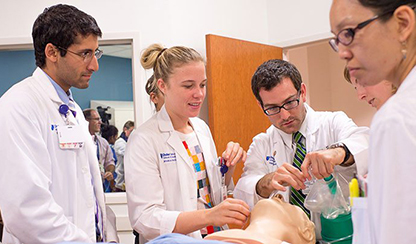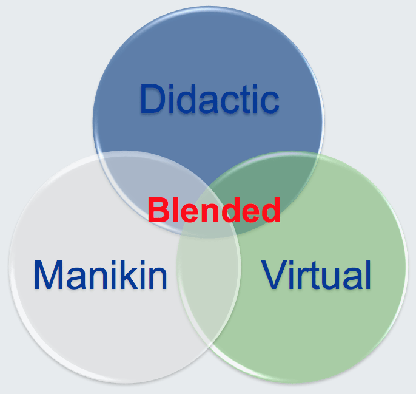
The use of live patients in real clinical settings has long been a standard in the education and training of healthcare professionals. However, growing interest in quality care and patient safety has caused academic institutions to search for new, alternative training methods. The documented success of simulation-based training in aviation and the military has caused an increased interest in integrating it into medical education and performance improvement.
Simulation can be defined as the artificial recreation of events for the purpose of education, research, and quality improvement. This technique uses different modes such as mannequins, skills trainers, human actors, and interactive computer environments to accomplish its objectives. Simulation also uses technology-enhanced teaching methods such as video-assisted debriefing sessions that allow participants to observe and reflectively learn from their own and their peer’s actions and behaviors.
Healthcare simulation centers are a relatively recent phenomenon, evolving over the past few decades. New simulation technologies, and training techniques have dramatically increased the prevalence of simulation centers in many facets of healthcare across the US. Medical, nursing, and allied health schools, hospitals, and other healthcare agencies are embracing and investing in healthcare simulation.
The Duke HSPSC works to incorporate various modes of simulation to create multi-modal or blended educational curricula. By combining live or web-based didactic presentations, interactive games-based learning, partial task trainers, and manikin-based simulation, we create powerful, practical approaches to initial and on-going sedation approach to initial and on-going sedation training.
Mannequin simulation enables the recreation of healthcare scenarios in realistic environments, allowing a broad spectrum of users to develop preparedness and insight best learned and practiced in circumstances that are realistic but avoid potential harm to patients. This modality is also useful in helping individual learners apply their knowledge, skills, and abilities in an inter-professional environment, which is essential in light of the increasing complexity of healthcare and need for interdisciplinary collaboration. Increasingly, simulation is used as a quality and process improvement tool within the health system.
Partial task trainers and virtual procedural trainers help learners develop skills and gain confidence in performing selected procedures.
Role-playing, or the use of standardized patients, is a mode of simulation that uses the live portrayal of patients or team members. This method is particularly effective for events focused on communication, as well as diagnostic and examination skills.
Duke is pioneering the use of virtual, computer-based simulation to train clinicians in crisis management, procedural skills, decision-making, and teamwork. This cutting-edge technology is widely deployable and can be scaled to the size of a health system, or distributed across the world for global health initiatives.

Using virtual training, the ratio of students to trained educators could be increased without losing critical components of interactivity and realistic task dynamism and complexity. Complications of scheduling and location would be reduced as trainees complete the bulk of their training on their own time.
Three-dimensional interactive computer desktop-based applications have already been used with some success for training of large audiences. Successful interactive training environments are the embodiment of advanced learning technologies that operate where electronic computer games and graphics technology intersect with the needs of training and simulation. Within this category, inspiration, education and assessment are the primary goals, rather than entertainment. Successful interactive training environments incorporate the following attributes:
- Has a challenging goal
- Is fun to play and engaging
- Incorporates the concept of competition
- Imparts to the user a skill, knowledge, or attitude that can be applied to the real world.
The HSPSC provides support for Graduate Medical Education (GME), Undergraduate Medical Education (UME), Advanced Practice Nursing, interdisciplinary training, and is endorsed by the American Board of Anesthesiology (ABA) as a Maintenance of Certification in Anesthesiology (MOCA) site.